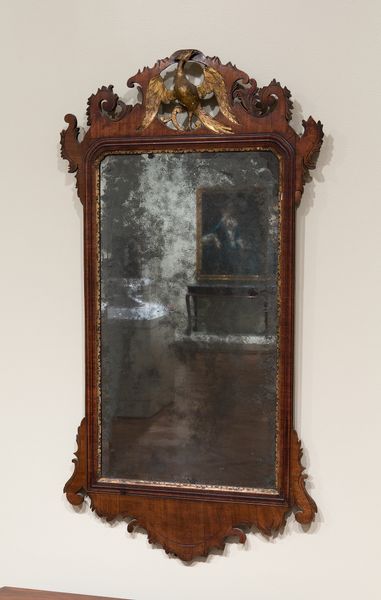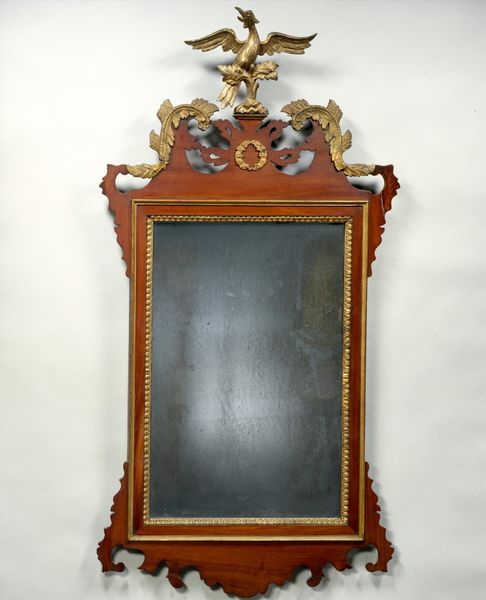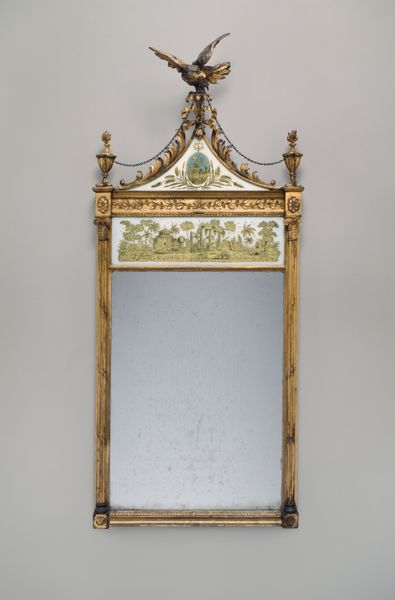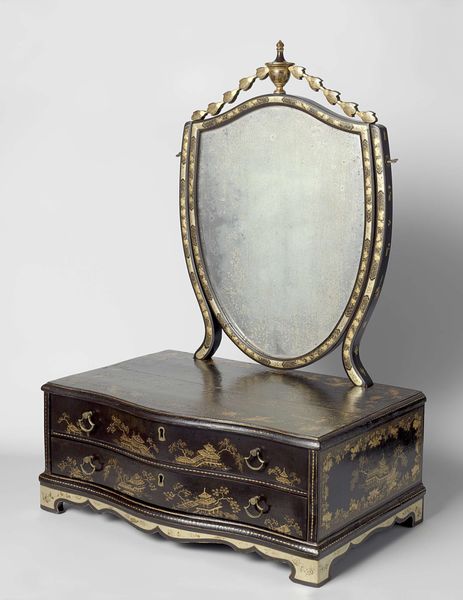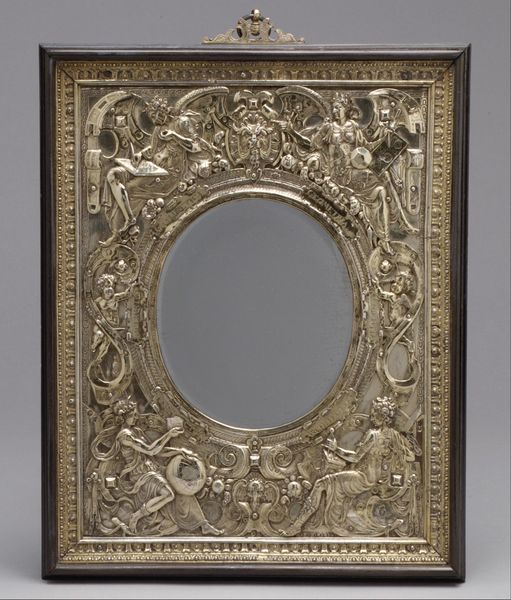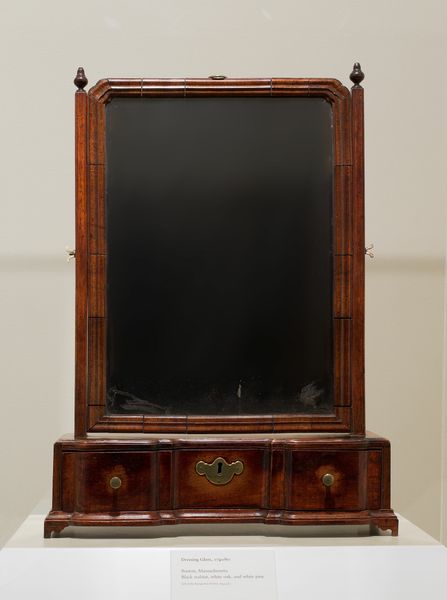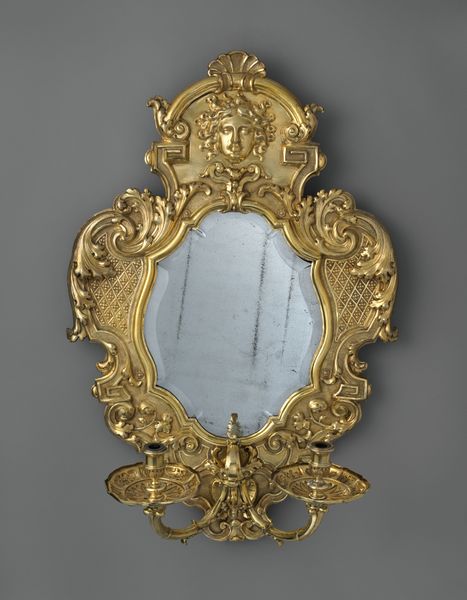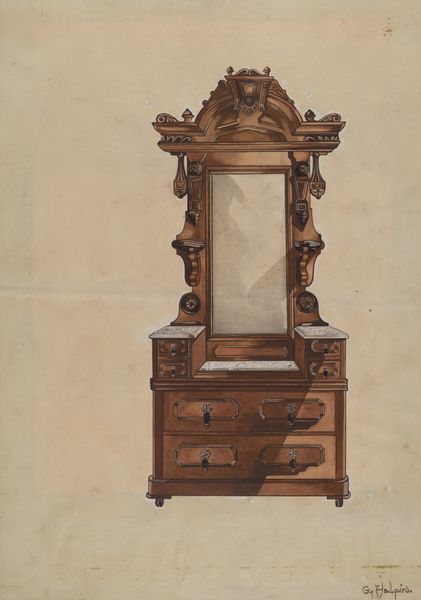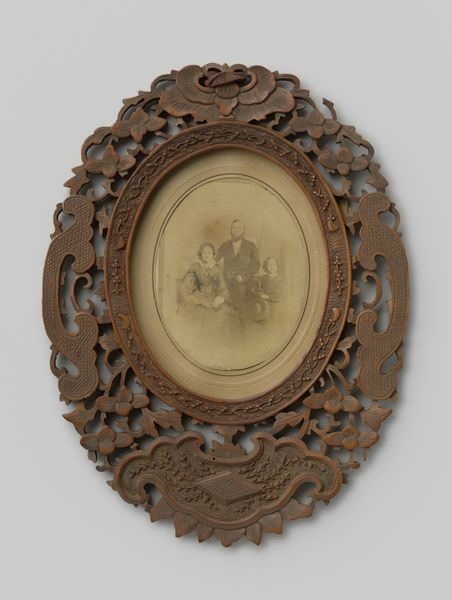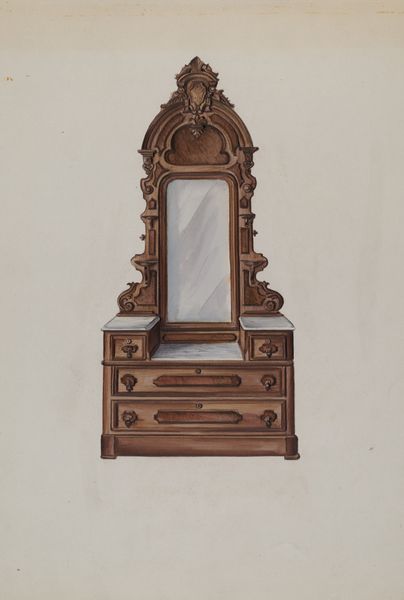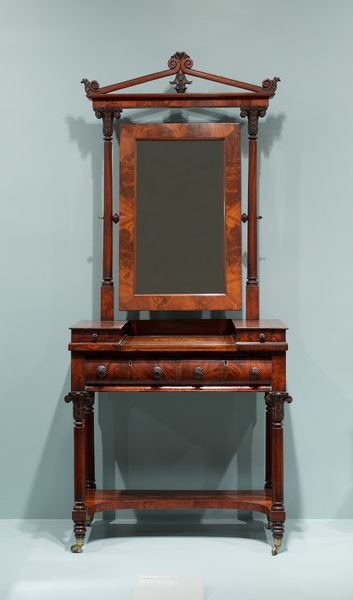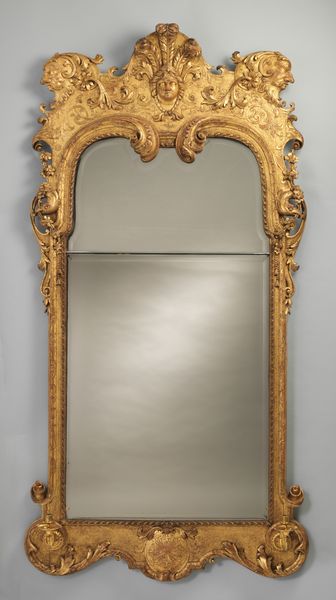
#
ornate
#
natural stone pattern
#
stone
#
sculpture
#
detailed texture
#
sculptural image
#
unrealistic statue
#
stoneware
#
decorative art
#
statue
Dimensions: height 164.0 cm, width 100.0 cm, depth 9.0 cm
Copyright: Rijks Museum: Open Domain
Curator: Looking at this piece, I feel a bit overwhelmed—but in a beautiful way! There's so much happening on this frame, a storm of ornamentation. What’s your take? Editor: Indeed! Let’s contextualize this dazzling work. We're examining a frame, created circa 1690 to 1700. It currently resides in the Rijksmuseum. A remarkable example of Baroque craftsmanship. Curator: Baroque! It's fitting; the ornate detailing definitely shouts opulence. I’m immediately drawn to the contrast between the detailed carvings of what looks like flowers and cherubic figures against the smoothness of the frame. Do you think that contrast adds to its appeal? Editor: Absolutely, contrast is crucial. It exemplifies a hierarchical interplay: The eye navigates from the immediate surface to the dense ornamental reliefs—inducing optical intrigue while directing the viewer toward the center, inviting introspection. Semiotically, this interplay encourages engagement. Curator: You lost me a little with the semiotics, but I definitely get what you mean. The way light and shadow play across the relief work pulls the viewer into this miniature world carved in stone. Is it stone? Editor: Most likely, yes. Perhaps dark wood polished to evoke the qualities of natural stone—an ingenious way to capture and distort ambient light. I suspect a dark hued hardwood as the substrate with gesso or plaster underpainting. This frame, conceived for opulent settings, reflects power, prestige and the social performance emblematic of the Baroque epoch. Curator: It also gives me a feeling of weight. Both literal, since it’s such dense carving, and symbolic. This isn’t something light. Did every house back then have a mirror like this, or was it just for the really, really rich? Editor: Rarity certainly bolstered exclusivity. These details required specialized artistry that signified status. The integration of natural motifs alludes to the influence of exterior realms on indoor decoration trends amongst affluent 17th century Netherlands patrons. Curator: Reflecting upon the piece, I feel as though the craftsman poured their whole heart and life into this frame, this object to hold an image, maybe even reflect an image of themselves, just, it would never, ever happen these days, right? Editor: The piece exemplifies both individual skill and broader cultural mores regarding ornamentation and representation. A wonderful, evocative statement, indeed!
Comments
rijksmuseum about 2 years ago
⋮
This frame is one of a pair; its companion is in the Metropolitan Museum in New York. They may have been intended as frames for a pair of wedding portraits. Johannes Hannart came from Hamburg. In 1682 he was appointed woodcarver of the city of The Hague. He ornamented the frame with detailed, virtuoso carving. The mirror glass was added later.
Join the conversation
Join millions of artists and users on Artera today and experience the ultimate creative platform.

